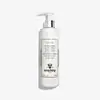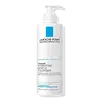Sisley Paris Lyslait Cleansing Milk with White Lily Versus La Roche-Posay Toleriane Hydrating Gentle Cleanser
What's inside
What's inside
 Key Ingredients
Key Ingredients

 Benefits
Benefits

 Concerns
Concerns

 Ingredients Side-by-side
Ingredients Side-by-side

Water
Skin ConditioningHelianthus Annuus Seed Oil
EmollientHydrogenated Polyisobutene
EmollientIsopropyl Palmitate
EmollientTilia Cordata Flower Water
MaskingCitrus Aurantium Amara Flower Water
MaskingButylene Glycol
HumectantGlycerin
HumectantCetearyl Alcohol
EmollientTocopheryl Acetate
AntioxidantMalva Sylvestris Flower Extract
Skin ConditioningTilia Cordata Extract
RefreshingLilium Candidum Flower Extract
Skin ConditioningLauryl Glucoside
CleansingPolyglyceryl-2 Dipolyhydroxystearate
Skin ConditioningC14-22 Alcohols
Emulsion StabilisingCarbomer
Emulsion StabilisingCeteareth-20
CleansingCetyl Alcohol
EmollientC12-20 Alkyl Glucoside
EmulsifyingDisodium EDTA
Sodium Hydroxide
BufferingXanthan Gum
EmulsifyingCitric Acid
BufferingPhenoxyethanol
PreservativeDehydroacetic Acid
PreservativePotassium Sorbate
PreservativeSodium Benzoate
MaskingWater, Helianthus Annuus Seed Oil, Hydrogenated Polyisobutene, Isopropyl Palmitate, Tilia Cordata Flower Water, Citrus Aurantium Amara Flower Water, Butylene Glycol, Glycerin, Cetearyl Alcohol, Tocopheryl Acetate, Malva Sylvestris Flower Extract, Tilia Cordata Extract, Lilium Candidum Flower Extract, Lauryl Glucoside, Polyglyceryl-2 Dipolyhydroxystearate, C14-22 Alcohols, Carbomer, Ceteareth-20, Cetyl Alcohol, C12-20 Alkyl Glucoside, Disodium EDTA, Sodium Hydroxide, Xanthan Gum, Citric Acid, Phenoxyethanol, Dehydroacetic Acid, Potassium Sorbate, Sodium Benzoate
 Reviews
Reviews

Ingredients Explained
These ingredients are found in both products.
Ingredients higher up in an ingredient list are typically present in a larger amount.
Disodium EDTA plays a role in making products more stable by aiding other preservatives.
It is a chelating agent, meaning it neutralizes metal ions that may be found in a product.
Disodium EDTA is a salt of edetic acid and is found to be safe in cosmetic ingredients.
Learn more about Disodium EDTAGlycerin is already naturally found in your skin. It helps moisturize and protect your skin.
A study from 2016 found glycerin to be more effective as a humectant than AHAs and hyaluronic acid.
As a humectant, it helps the skin stay hydrated by pulling moisture to your skin. The low molecular weight of glycerin allows it to pull moisture into the deeper layers of your skin.
Hydrated skin improves your skin barrier; Your skin barrier helps protect against irritants and bacteria.
Glycerin has also been found to have antimicrobial and antiviral properties. Due to these properties, glycerin is often used in wound and burn treatments.
In cosmetics, glycerin is usually derived from plants such as soybean or palm. However, it can also be sourced from animals, such as tallow or animal fat.
This ingredient is organic, colorless, odorless, and non-toxic.
Glycerin is the name for this ingredient in American English. British English uses Glycerol/Glycerine.
Learn more about GlycerinWater. It's the most common cosmetic ingredient of all. You'll usually see it at the top of ingredient lists, meaning that it makes up the largest part of the product.
So why is it so popular? Water most often acts as a solvent - this means that it helps dissolve other ingredients into the formulation.
You'll also recognize water as that liquid we all need to stay alive. If you see this, drink a glass of water. Stay hydrated!
Learn more about Water